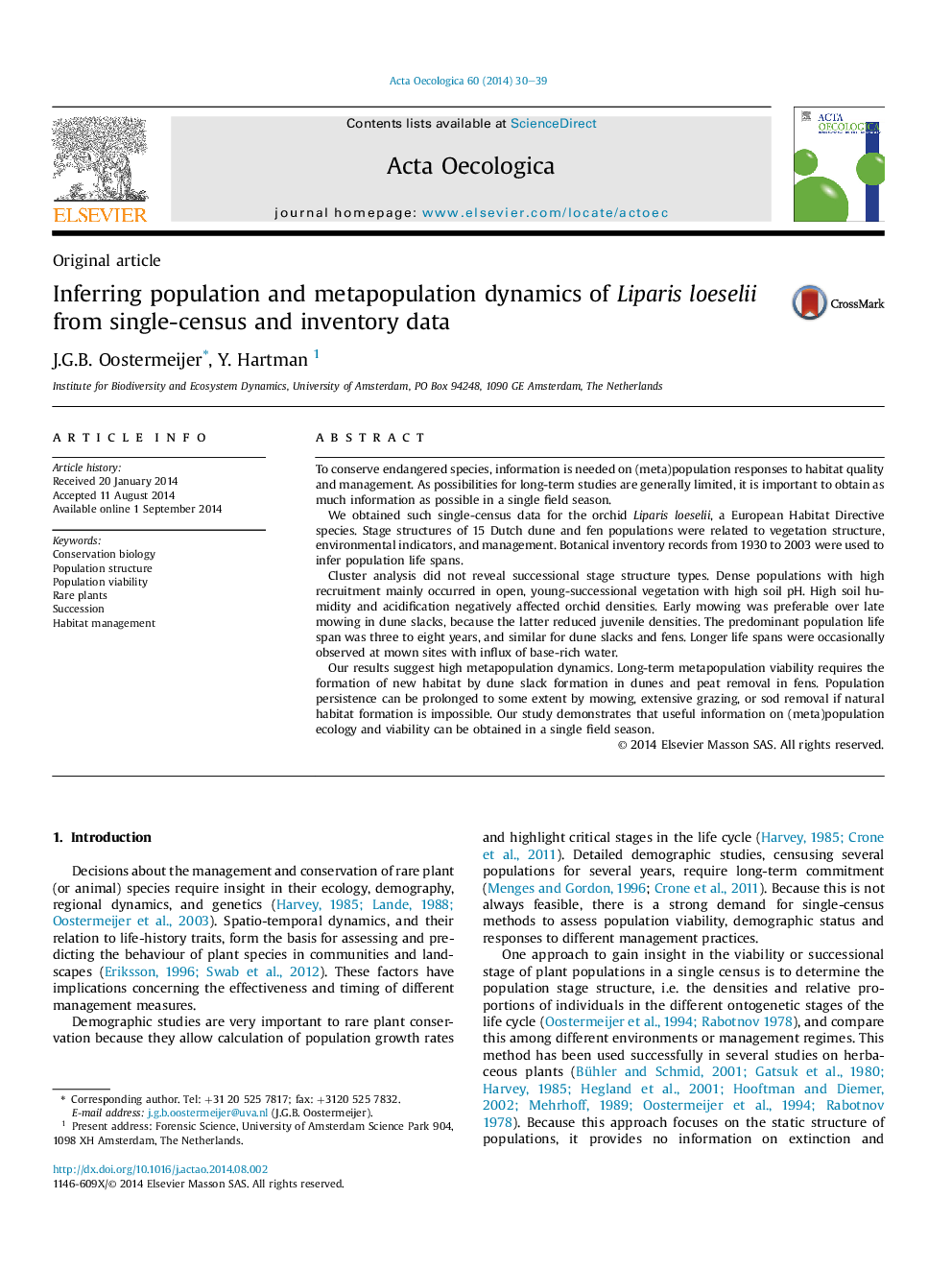| کد مقاله | کد نشریه | سال انتشار | مقاله انگلیسی | نسخه تمام متن |
|---|---|---|---|---|
| 4380618 | 1617711 | 2014 | 10 صفحه PDF | دانلود رایگان |

• We related population structure of Liparis loeselii to fen and dune slack ecological variables.
• We also determined mean population life spans from inventory records.
• Recruitment correlated positively with soil pH; wet conditions negatively affected densities.
• Mean population life spans were short, between 8 and 10 years.
• A one-year study can provide very useful ecological insights, even into metapopulation dynamics.
To conserve endangered species, information is needed on (meta)population responses to habitat quality and management. As possibilities for long-term studies are generally limited, it is important to obtain as much information as possible in a single field season.We obtained such single-census data for the orchid Liparis loeselii, a European Habitat Directive species. Stage structures of 15 Dutch dune and fen populations were related to vegetation structure, environmental indicators, and management. Botanical inventory records from 1930 to 2003 were used to infer population life spans.Cluster analysis did not reveal successional stage structure types. Dense populations with high recruitment mainly occurred in open, young-successional vegetation with high soil pH. High soil humidity and acidification negatively affected orchid densities. Early mowing was preferable over late mowing in dune slacks, because the latter reduced juvenile densities. The predominant population life span was three to eight years, and similar for dune slacks and fens. Longer life spans were occasionally observed at mown sites with influx of base-rich water.Our results suggest high metapopulation dynamics. Long-term metapopulation viability requires the formation of new habitat by dune slack formation in dunes and peat removal in fens. Population persistence can be prolonged to some extent by mowing, extensive grazing, or sod removal if natural habitat formation is impossible. Our study demonstrates that useful information on (meta)population ecology and viability can be obtained in a single field season.
Figure optionsDownload as PowerPoint slide
Journal: Acta Oecologica - Volume 60, October 2014, Pages 30–39